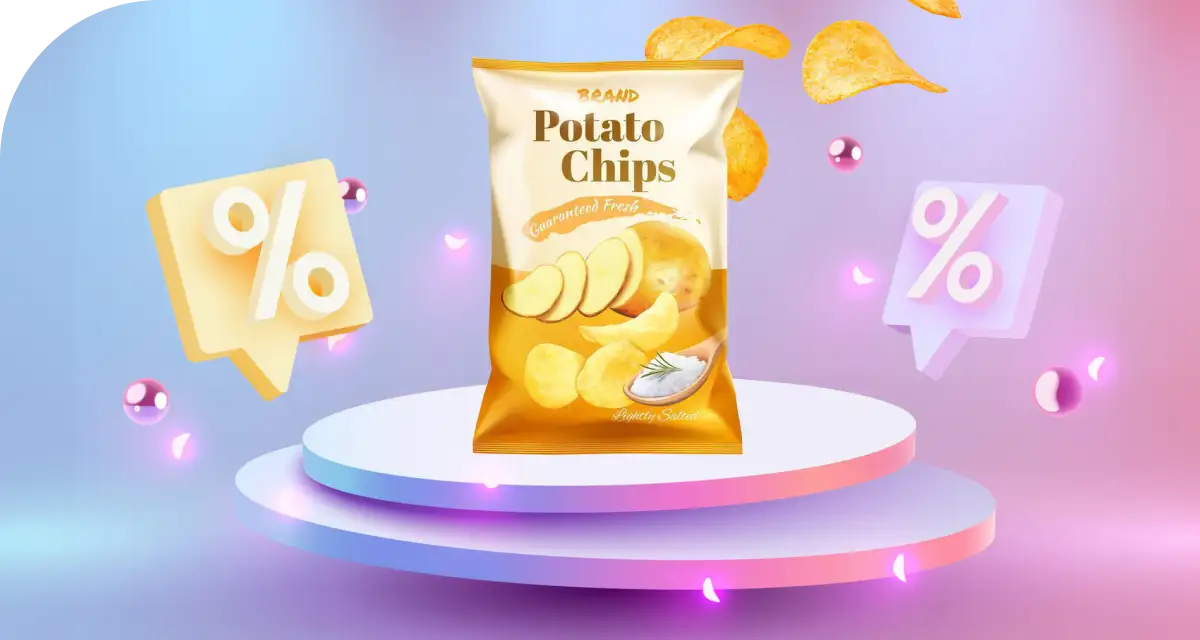Winning at Promotion Planning: a Guide for CPGs and Retailers
Done right, promotion planning helps improve revenue management, enhance trade promotion marketing, and drive consistent wins in CPG brand management, from shelf to cart.
Consumers are increasingly driven by a demand for value, impacting both volume and price/mix growth. Channels offering everyday value, such as private labels, have become more influential.
But, to truly drive success, CPG brands must utilize promotion planning as a strategic tool, incorporating it into their overall marketing and sales strategies.
This blog post will explore promotion planning in the CPG industry, its benefits, and best practices for successful implementation.
What is promotion planning?

Promotion planning is the process of strategically organizing and executing short-term marketing efforts to boost product visibility, increase sales, and win market share.
For CPGs and retailers, this usually includes in-store discounts, endcap features, eRetail banners, loyalty campaigns, or a blend of all of these.
It’s not just about the “what” (BOGOs, coupons, bundles), but also the “why,” “where,” and “when.”
Promotions must align with category goals, pricing strategies, and consumer behaviors across channels—especially as digital shelf strategy becomes more central to execution.
The Rise of Private Label and Premium Brands
Private label brands saw a 3% volume increase over last year, while mainstream brands experienced a 1% decline.
This value-driven behavior is also reflected in how consumers respond to targeted promotions, especially those that amplify perceived savings.
Premium brands that deliver perceived value also grew by 3% in volume. Consumers are making more trips to stores (up 8.9%) but buying fewer items per trip (an 11% decline).
They are also focusing on perimeter categories like fresh produce and dairy (+2% volume) rather than center-store items (+0.6%).
This reflects selective buying habits, where consumers stock up less often, delay purchases or switch to alternatives.
In this context, well-executed promotions become a key lever to influence trip behavior and basket size.
BOGO promotions are the third most popular type of promotion among shoppers, capable of increasing sales by up to 90%.
They are effective because consumers perceive added value when receiving something “free,” which encourages impulse purchases and increases average order value.
For example, customers might buy extra items to qualify for deals like “Buy two, get one free“.
LTOs are highly effective at driving consumer engagement and sales. In the U.S., 91% of consumers are more likely to visit a restaurant that introduces new menu items through LTOs.
These promotions can spike sales by up to 20%. LTOs help clear inventory, test new products, and attract new customers while rewarding loyal ones.
Seasonal trends and cultural events often align with LTO campaigns to maximize impact.
How a promotion planning process works
A smart promotion planning process aligns marketing, sales, and supply chain from the start.
Here’s a simplified flow:
Set objectives
Clearly define what you want to achieve with your promotion. Are you looking to increase basket size, deplete aging inventory, or drive a trial for a new product? Understanding your primary goal will help shape the rest of your strategy.
Analyze historical performance
Dive into past promotional data to identify trends. What types of promotions worked well? Which ones fell flat? Analyze the reasons behind the success or failure to inform future decisions and avoid repeated mistakes.
Identify target audience & timing
Understand who you’re trying to reach and when. Segment your audience based on different consumption moments or behaviors—whether it’s weekday lunches, weekend gatherings, or special occasions. Timing your promotion for maximum relevance makes a huge difference.
Choose promotion type
Decide on the format that best suits your objectives and audience. Consider discounts, loyalty rewards, product bundles, or limited-edition items to engage customers. Each type has its unique appeal and works best in specific scenarios.
Select channels
Determine where your promotion will appear. Will it be featured on retail shelves, e-commerce platforms, foodservice menus, or across all three? A multi-channel approach can help reach a broader audience and drive greater impact.
Build the plan
Create a cohesive promotional strategy that integrates with your broader revenue management goals. Make sure the plan aligns with your pricing structure, brand positioning, and overall business objectives.
Execute & track
Launch the promotion and monitor its performance in real time. Track key metrics like sales lift, customer engagement, and ROI to ensure the campaign is on the right track and delivering results.
Evaluate & optimize
After the promotion ends, review the performance data thoroughly. Identify what worked, what didn’t, and why. Use these insights to refine your future promotional efforts for even better outcomes.
Retail promotion planning process
When it comes to retail, there are a few more players to consider—buyers, merchandisers, and field teams.
Here’s a quick view of how the retail process breaks down:
| Stage | Key Actions | Stakeholders Involved |
| Forecasting | Align on volume expectations and calendar slots | Sales, Demand Planning, Retail Buyers |
| Deal Approval | Negotiate terms, secure promotional space | Sales, Retail Partners |
| Execution | Deliver promo assets, pricing, and shelf updates | Trade Marketing, Merchandising Teams |
| Compliance Monitoring | Ensure pricing and visibility match the plan | Retail Ops, Field Teams |
| Post-Promo Review | Measure lift, ROI, cannibalization, and shopper behavior | Insights, Finance, Brand Teams |
Need real-time data to back your next campaign? See how Tastewise makes promotion planning faster, smarter, and better aligned with retail shelf strategy.
Examples of promotion planning templates
| Campaign Name | Objective | Channel | Offer Type | Timeline | Budget | Metrics |
| Back-to-School Boost | Drive trial of lunch kits | Mass Retail + eRetail | BOGO + Loyalty Points | Aug 1 – Sep 15 | $250,000 | Incremental sales, redemption rate |
| Veganuary Campaign | Shift toward plant-based | eCommerce | 20% Off with Subscription | Jan 1 – Jan 31 | $100,000 | New users, CAC, retention |
| Flavor of the Month | Drive menu trial | Foodservice + Delivery Apps | Feature-based bundle | Ongoing Monthly | $50,000/month | Menu lift, reviews, reorder rate |
Use templates like these to keep teams aligned and track effectiveness across trade tactics.
Promotion planning strategies
Building a successful promotion plan requires smart, data-driven strategies that align with both consumer demand and market trends.
Here’s an expanded list to consider for your next plan:
Use AI to prioritize high-converting SKUs by channel
Identify the products that drive the most sales and target them effectively based on the channel (e.g., e-commerce, retail, foodservice). AI tools can help highlight these opportunities for maximum returns.
Align promotions with trends
Focus your efforts around specific times when consumers are most likely to engage, like weeknight dinners, lunch on-the-go, or seasonal holidays, to increase relevance and sales impact.
Use past campaigns to improve revenue models
Analyze historical data to understand what worked (or didn’t) and use these insights to refine your revenue strategies and optimize future campaigns.
Combine trade promotions with digital campaigns for greater impact
By aligning trade promotions with direct-to-consumer marketing efforts, you can amplify your reach and create a more cohesive brand message that resonates with both retailers and consumers.
Customize promotions with real-time social, recipe, and menu data
Utilize local data to customize where, when, and how you run promotions, ensuring they are relevant to regional preferences and trends.
Add claims testing to your digital shelf strategy to ensure messaging meets demand
Test and refine product claims (e.g., sustainability, health benefits) to align with what your audience values most, boosting trust and intent to purchase.
Combine promotions with loyalty incentives for a lasting impact
Combine limited-time offers with loyalty programs or rewards to keep consumers engaged beyond a single purchase. This builds lasting relationships and repeat business.
Test different packaging formats
Explore different packaging options (e.g., colors, sizes, materials) and conduct consumer testing to determine which format resonates best with your target audience.
This can help improve the overall perceived value of your product and increase customer satisfaction.
Why this matters
Promotions are one of the most expensive tools in your toolkit.
When they work, they boost penetration, drive loyalty, and win category share.
When they flop, they drain budgets and clutter shelves.
Modern CPG brand management requires smarter tools. Platforms like Tastewise use real-time data from social media, recipes, menus, and eRetail to show what people are actually eating, cooking, and buying.
That’s how the best teams transform trade promotion marketing into something measurable, efficient, and effective.
The bottom line? A great promotion planning process improves revenue management, strengthens your digital shelf strategy, and gives your team the speed it needs to outpace the competition.
FAQs
Promotions can either erode or increase margins. Tying them to consumption insights helps avoid waste and improves ROI.
Because visibility alone isn’t enough—execution must match consumer search behavior, product detail page strength, and competitive pricing.
Yes. Tastewise helps you identify high-impact opportunities for you to pursue across social, menus, and retail, and turn that into real action—fast.




